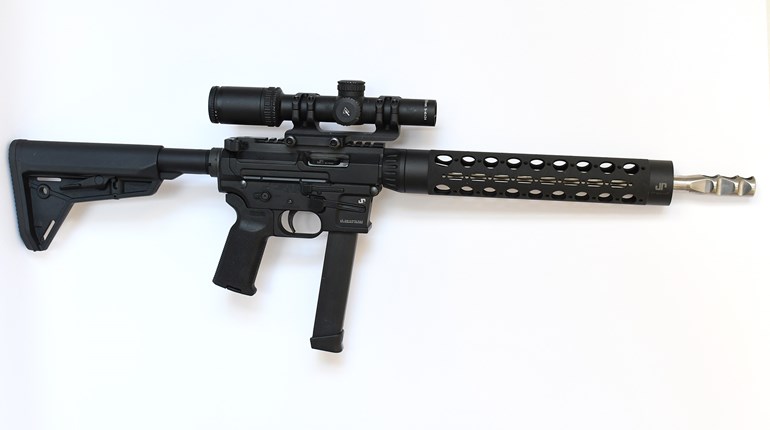
USPSA was back at the CMP Marksmanship Park in Talladega, Ala., for the 2023 Vortex Optics Open and Pistol-Caliber Carbine National Championship, presented by Federal, September 6-10. The CMP Marksmanship Park has been an excellent range and host for both USPSA and the World Speed Shooting Championship since 2018.
The CMP Marksmanship Park is a 500-acre facility located just two miles from the Talladega Super Speedway. With the Cheaha mountain range as a backdrop, the facility offers so many amenities beyond the Action Pistol bays where the USPSA Nationals are held. The location provides easy access, being less than two hours from Atlanta’s Hartsfield-Jackson International Airport and an hour from Birmingham-Shuttlesworth International Airport. With Talladega being the host to more than a quarter-million race fans a year, there are ample hotels and lodging options to choose from. The surrounding cities of Oxford and Anniston, as well as Pell City and Leeds have hotels, restaurants and shopping areas for everything you would need during your stay.
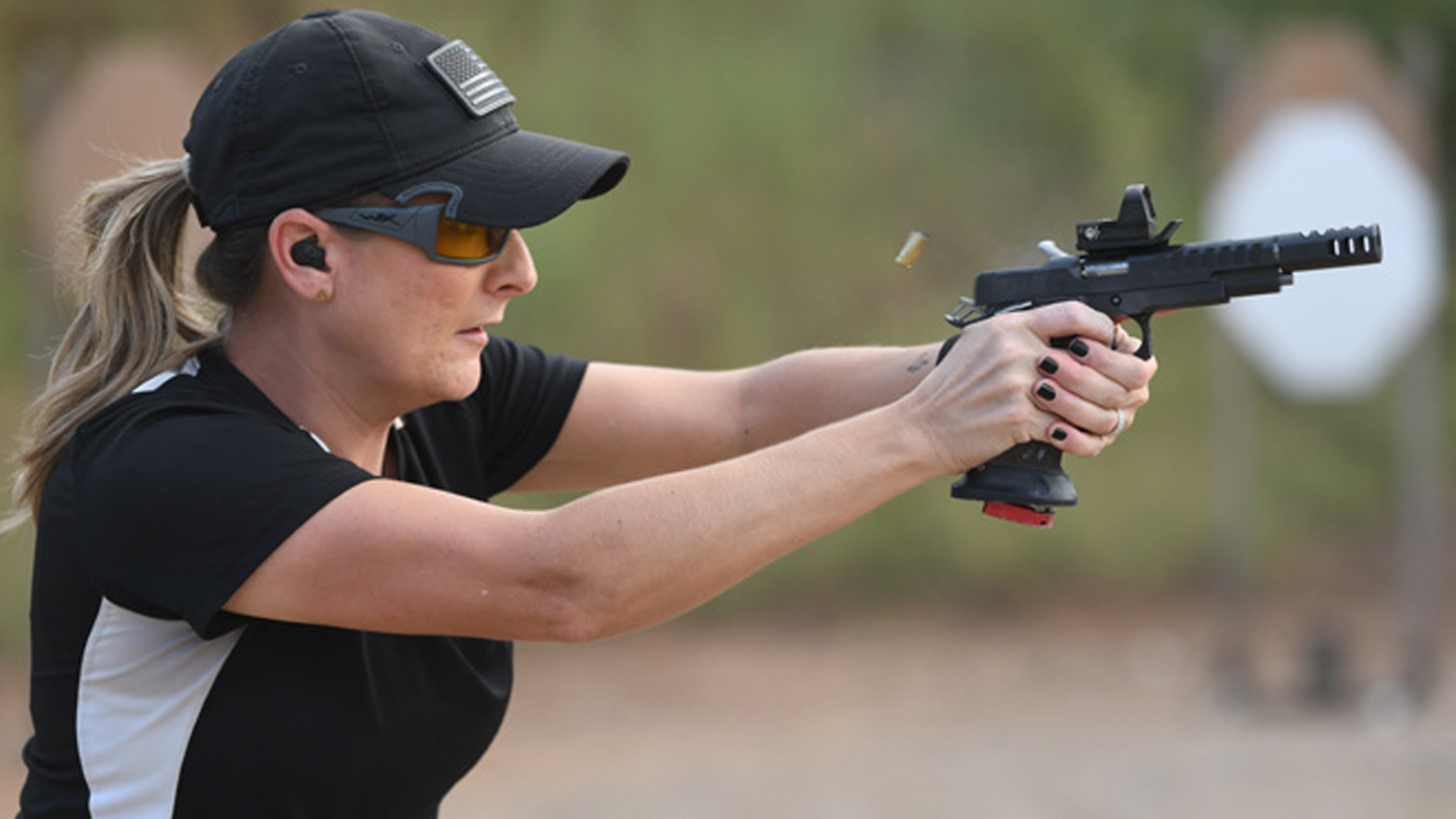
Besides the Action Pistol bays where USPSA matches are held, CMP offers the use of a 13,000 square-foot clubhouse, where we have access to classrooms and the use of the patio that overlooks the John C. Garand 600-yard rifle range. The clubhouse also has the CMP Pro Shop where members can purchase M1 Garands, ammunition and other offerings. The CMP allows us the use of their public range for function fire and sight-in. When not shooting, there are several other shooting sports that you can take advantage of, such as the rifle ranges, the trap field, five-stand, sporting clays, the Unknown Distance Range and archery ranges. For 2024 there will be additional bays that USPSA will be able to take advantage of for the matches scheduled.
The 15 Action Pistol bays where competitors could find the 18 stages that made up this year’s USPSA Open and Pistol-Caliber Carbine Championship are large and allow us to build stages with a variety of challenges. The range is set up with 10 bays (Alpha and Bravo bays) that mirror each other, and the upper range of five bays (Charlie bays). This allows the competition to be broken up into the three zones for the competition schedule over the three days of shooting. The match is broken up into two different schedules where competitors either shoot a.m./p.m./a.m. or p.m./a.m./p.m. on Friday, Saturday and Sunday. On each day of competition, competitors will shoot five stops or in five bays. Each zone for this year’s match had six stages to make up the 18 total stages for the match. This means that in each zone one of the bays had doubled-up stages.
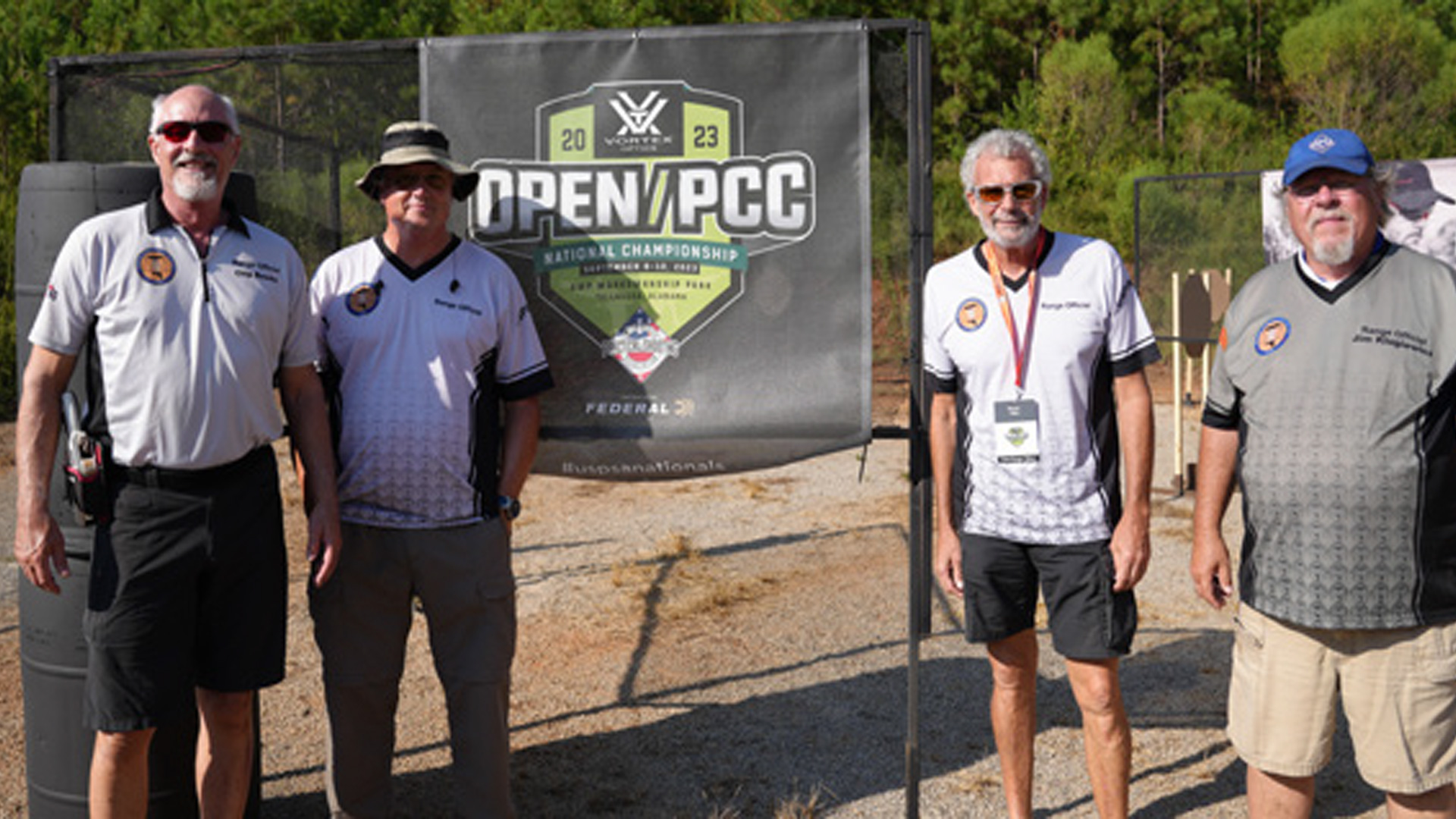
The volunteer staff of Range Officers and support arrived Tuesday and they were able to shoot the match on Wednesday and Thursday. The compressed schedule means that they were shooting all day in order to complete the match, and then working a stage for the next three days of competition. It is a long week for them, and while there is travel reimbursement, plus a per diem, provided lunch, staff dinner and other amenities offered, they are giving up their time in order for these matches to take place. In addition, the setup crew comes in a week before the staff match shoots to build the stages and prepare the range for the match. There are a lot of hands and help that go into making these competitions happen, and months of planning occurs beforehand in order to ensure a safe, fun and fair match.
The stage designs for this year’s Open and Pistol-Caliber Carbine match were submitted by Drew Coleman, Russell Fortney, Walt Paegel and Kyle Stephens. Walt Paegel stepped up to take on the Co-Match Director role with me. Walt selected the 17 stages along with the Standards stage I did for the 18 total that would go on the ground from the submitted stages. Paegel and I planned the flow of the match with which stages would go into each zone and bay. This is an important part of the overall match. Each squad had 13 competitors, with stage turn times of 45 minutes. That means that you have to get 13 competitors through each bay, including the walkthrough, scoring and resetting in that time frame. It is based on three minutes per shooter from Make Ready to Make Ready, 39 minutes. Add the four-minute walkthrough and you have 43 minutes per squad, with a two-minute travel time between stages to stay on schedule.
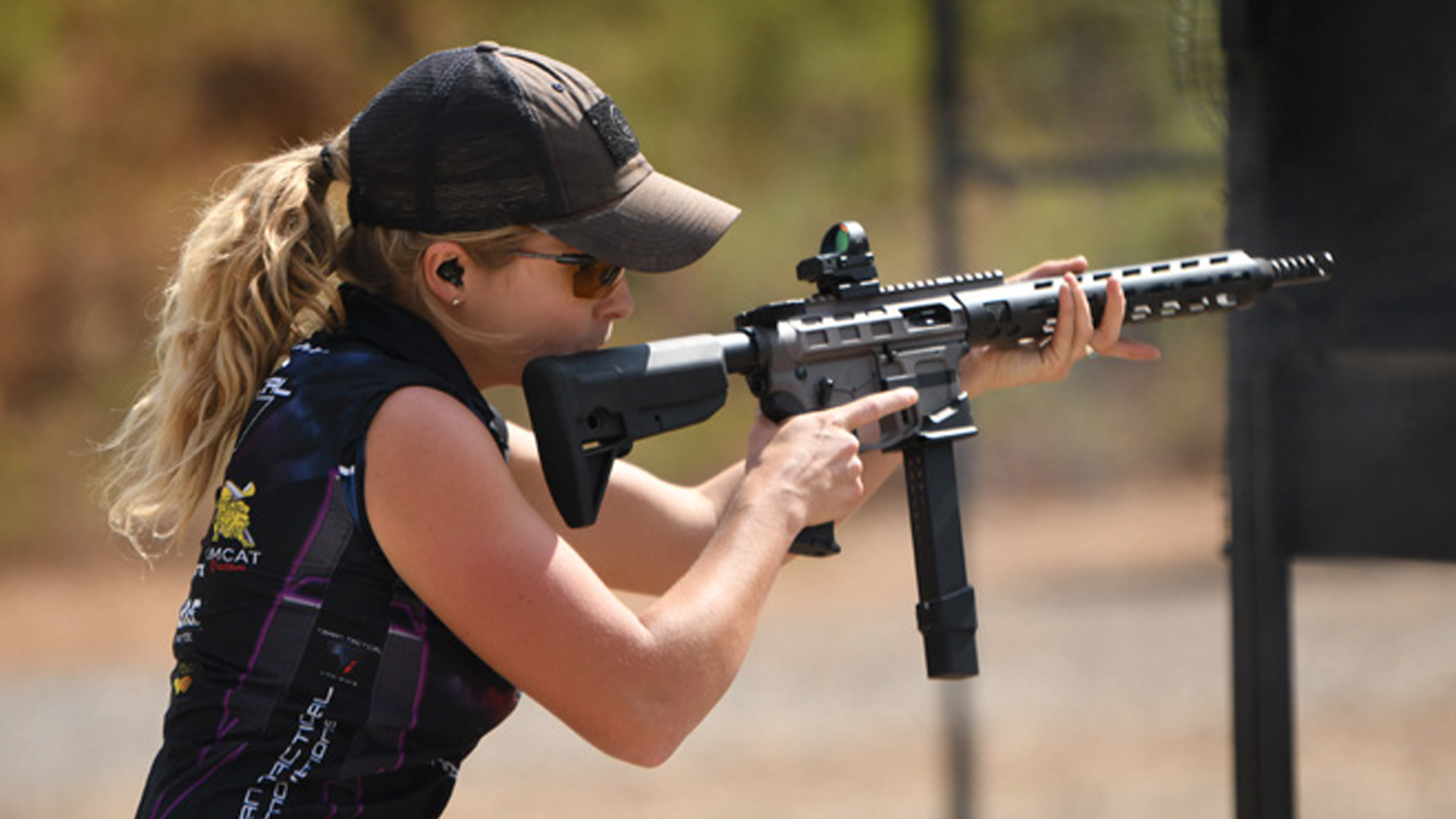
The build process begins with laying everything out that should be needed in each bay, then roughed in. Fault lines are laid out, walls set up and target stands dropped down in approximate locations. The goals are to get all 18 stages roughed in during the first two days of setup. Then you go back and start fine-tuning each stage, spiking down the fault lines and walls once you decide that things are fairly close. Normally, that is done with one zone each day. That leaves you with the final day to start hanging targets and checking to make sure each stage is ready. During this time is also where changes might happen from what is presented in the matchbook versus what you see on the ground. This could be for many different reasons; sometimes, what was planned won’t work, or once you are there with five or six other sets of eyes, something better becomes apparent. Start positions change many times because once built, you see something that makes better sense. A lot of times an activated target may change from a bobber to swinger or vice versa, because one might work better than the other, or it is as simple as what was in the bay. The idea is always to create shooting challenges—not prop challenges.
The stages here were a mix of Long, Medium, a Speed Shoot, one Fixed Time and a Standards stage for 429 required rounds. There were 65 poppers used and 13 activated targets. The goal was that both Pistol-Caliber Carbine and Open division platforms would be tested, and that the challenges were all going to be shooting-related. No matter your division or class, you would be tested.
Returning to defend his Pistol-Caliber Carbine national title for the seventh time was Max Leograndis. Some have come close, but he has dominated this division since 2017. Aaron Eddins pulled the upset of Christian Sailer in 2022 with his Open division title, would he be able to defend it, or would Sailer be out for revenge?
The stages were set and the divisions were stacked with shooters across the top competitors and players in their classes and categories. The Open division Super Squad had current and former champions such as Chris Tilley, KC Eusebio, JJ Racaza, Sailer and Eddins. On the Pistol-Caliber Carbine Super Squad, you had Josh Froelich, Zack Smith, Scott Greene and Justine Williams, all trying to knock Leograndis off his streak. For the next three days they would all battle it out, chasing each other for this year’s national title. The Ladies Open division saw Jessie Harrison take the win in 2022; would she be repeating this year against Morgan Leonhardt, Sloan Sanders and Meghan Smiley?
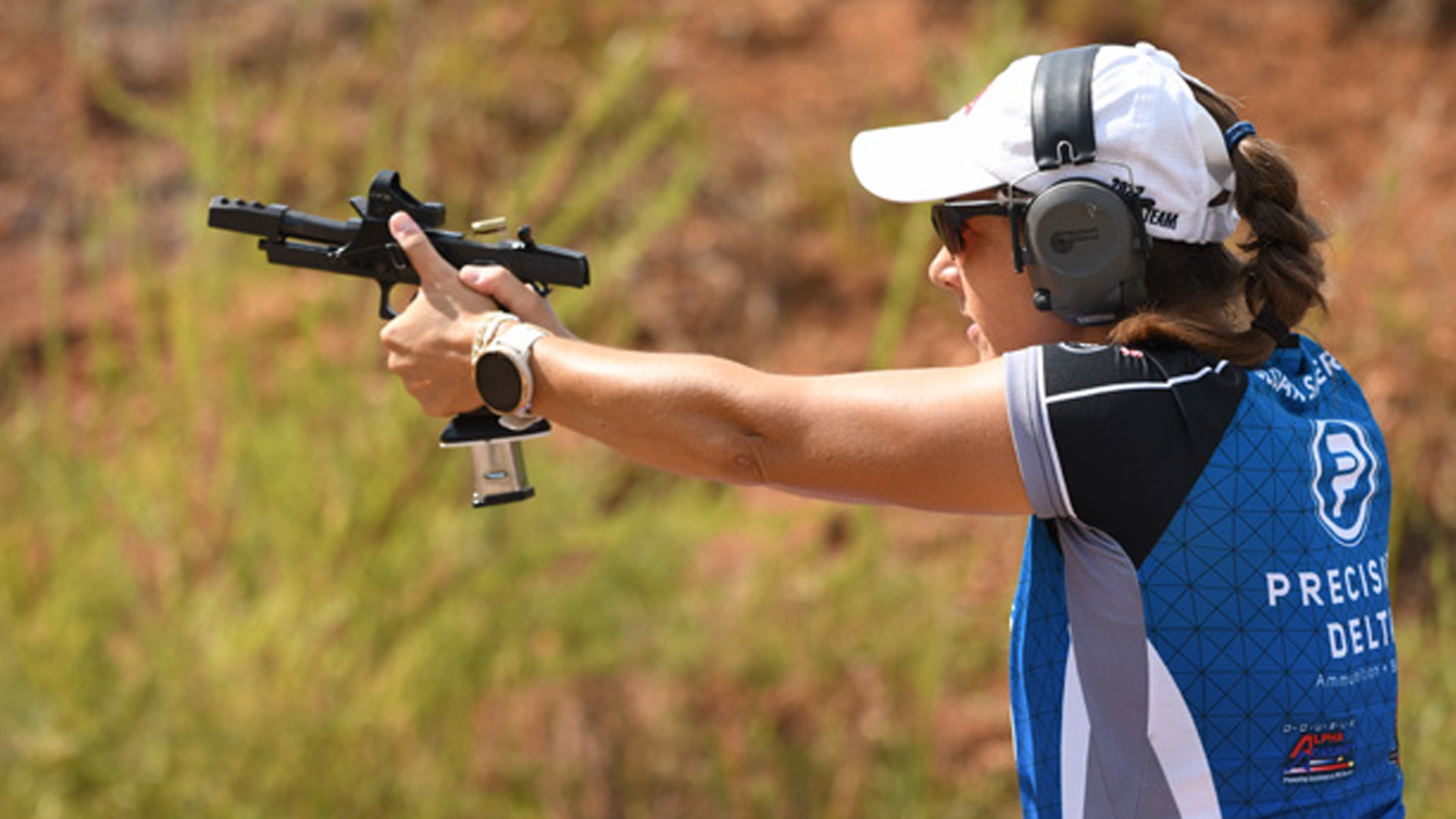
Day one for regular competition started Friday at 9:00 a.m. for the morning squads, and competitors each took on six stages in five of the bays in each zone. These squads were scheduled to wrap up by 12:45 p.m., and the afternoon squads would take to the range at 1:30 p.m. Zone 1 was worth 745 points, Zone 2 had 730 points on the line, and Zone 3 had the fewest with 670 points available. Both Super Squads started in Zone 1, and couldn’t slack off on the first day of competition or give up any points since it was the largest number available.
Stage 1 featured 10 USPSA targets and seven poppers for 27 rounds and was designed by Walt Paegel. As for Stage 2, it was from Kyle Stephens with 13 IPSC targets and two poppers for 28 rounds. Stage 1 had you starting uprange outside the shooting area, and Stage 2 was downrange touching the front fault line.
Stage 3 was the first stage with two activated targets, designed by Russell Fortney with 14 USPSA targets and four poppers. The activated targets were a swinger and a tip-out target that were set off by the same popper. The tip-out was not a disappearing target, as the upper scoring area was available from a different position.
All three of these first stages were shot multiple ways by competitors in each division. Being able to watch competitors work their way through stage plans and see how many options they came up with really made the amount of work that was put into the setup worth it. Stage 4, for example, was designed by Drew Coleman, who was also part of the setup crew. He was able to take his idea and what he wanted to challenge on the stage and build it. Walt and I worked through it with him as he led the setup crew to put it on the ground. It was 13 IPSC targets and five poppers. He used the whole bay for this build, and the competitors were going to have to move across this, engaging targets from multiple locations with several options.
Stages 5 and 6 were in a shared bay and finished out Zone 1. Stage 5 had two ports, three poppers and six USPSA targets, one of which was an activated swinger. Stage 6 was the only Speed Shoot in the match, with four IPSC targets and eight poppers, with a required reload between either the cardboard or the steel.
Day one had Leograndis with two stage wins, Stage 1 and 6. He racked up 708 of the available points. Froelich had only one stage win, Stage 2, and was behind by a little over 30 points after day one. Justine Williams had a total of 661 points, Zack Smith was still right in there with 660, even with a miss on Stage 1. Scott Greene had picked up a stage win on Stage 3 and was also right there with 659 points. In Open division, Sailer made sure everyone knew he was back for revenge with three stage wins after day one. He took Stages 1, 3 and 6, worth 730 points. John Vlieger had one stage win on Stage 2, but trailed behind by 60 points, while Eddins was back by almost 70 points.
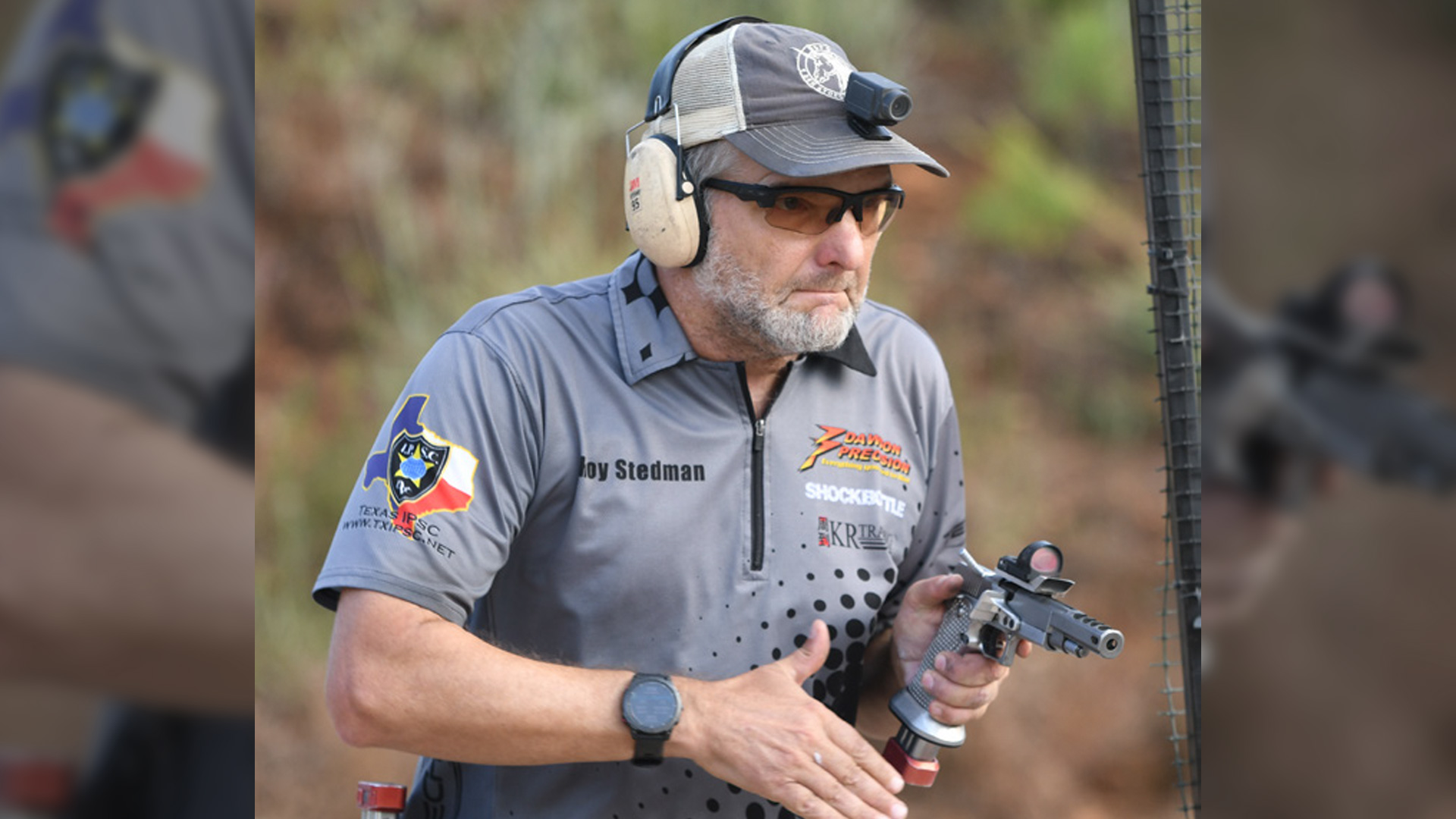
The ladies were battling it out in the same zone on day one. Jessie Harrison jumped out to an early lead with three wins on Stages 1, 3 and 6, but her fellow World Shoot teammate Sloan Sanders was right there in the mix with two wins at Stages 4 and 5. Morgan Leonhardt, shooting minor, notched a victory at Stage 2.
The Super Squads would move to the morning flight on day two, starting their Saturday morning in Zone 2, worth 730 points. Zone 2 started with Stage 7, a 31-rounder with 11 USPSA targets and nine poppers, one that activated a bobbing target. The next bay was doubled up with Stage 8 and 9. Stage 8 was from Fortney with 10 USPSA targets for 20 rounds; Stage 9 was from Drew Coleman, and is an example of one that changed several times during setup. It ended up being a seated start with an unloaded firearm on the table in front, with only six IPSC targets, one a swinger activated by the only popper on the stage.
Stage 10 was another Coleman design that would again take up the whole bay and have lots of options, as well as places you had to go. There was a lot of movement on this stage and some tricky retreat positions to get the 12 IPSC targets and four poppers. There was also a swinger on this one. Stage 11 ended up with three activated targets, a swinger, bobber and disappearing drop turner. Stage 12 wrapped up Zone 2 with a 24-round stage that had 11 USPSA and two poppers on it. Zone 2 had it all, long courses with some run and gun mixed in, unloaded start, tight shots and some longer ones, lots of activated targets and lots of options for the stages.
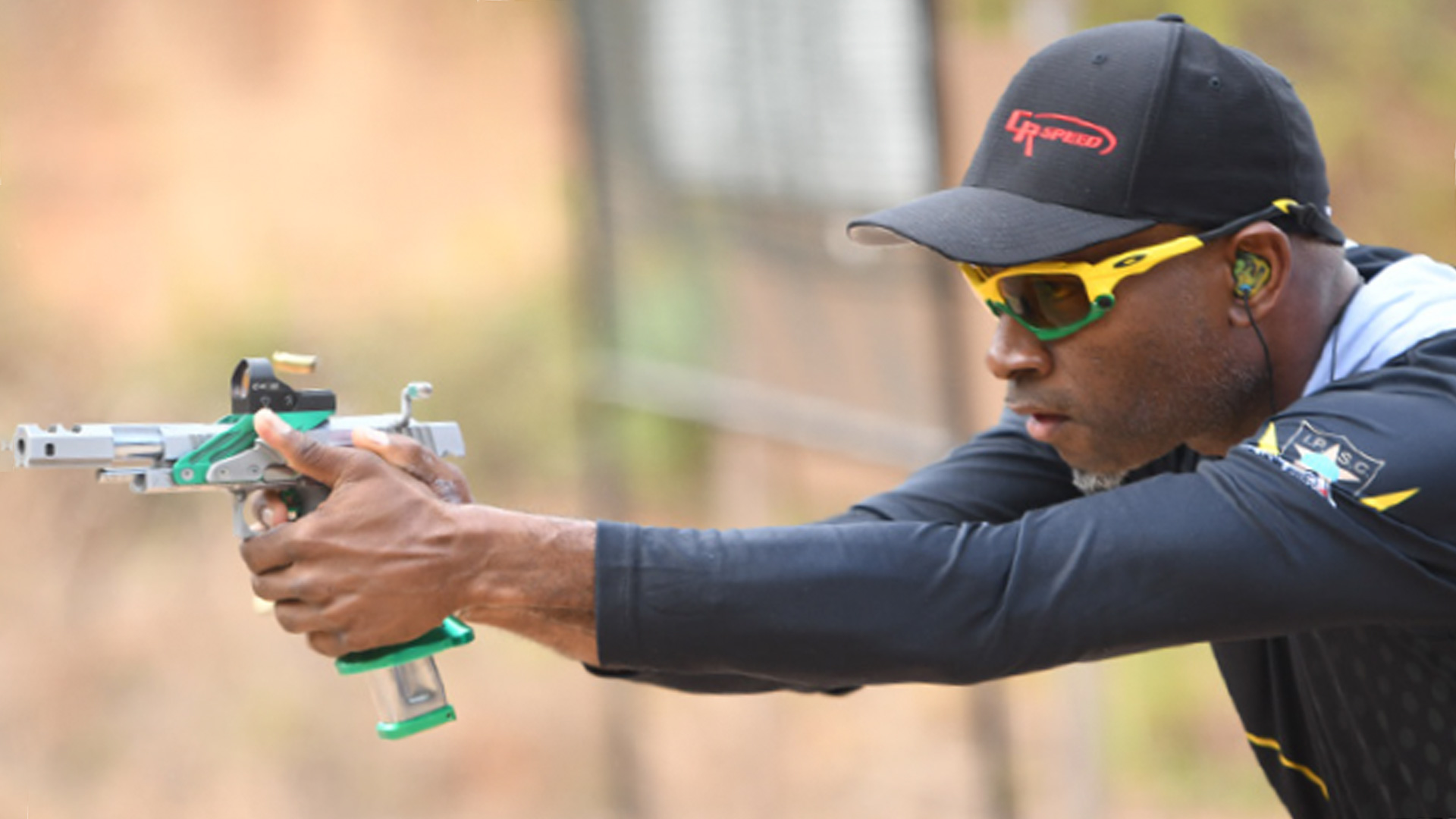
Christian Sailer gave up some ground with two misses and only one win on Stage 11. He added 686 more points, but Vlieger would grab 691 on day two. Lesgar Murdock bounced back from a slow start and would score 682 points. Bryan Jones was also in the hunt with a stage win on Stage 10. Tilley added 672 points on day two, and Eddins added a stage win, but struggled on several of the other stages in this zone. Leograndis with his JP-5 rolled into day two, taking wins on Stages 7 and 11. He also had a second on Stage 10 and third on Stage 9, adding 690 points to his lead. Froelich only had one win on Stage 12, scooping up 662 points.
Jessie Harrison was not letting up on day two; she won Stages 7, 10 and 12. She also was second on Stages 8, 9 and 11. Sanders had only one stage win on Stage 11 and Leonhardt took Stages 8 and 9. Harrison had stretched her lead out going into the third day by a lot, but anything can happen.
The final day of competition for these three squads started in the afternoon in Zone 3, which was worth the least amount of points—but they also had to get through chrono, so there were actually a lot of points on the line. This zone had the Fixed Time stage, as well as the Standards stage. Stage 13 was the Fixed Time, 16 rounds on eight USPSA targets in 9.70 seconds. One target was an activated swinger set in motion by a stomp pad, and the start was unloaded. You can thank Walt Paegel for this one.
Stage 14 was a 30-rounder that had you working your way downrange. Stage 15 was a 32-rounder with an activated bobber. Stages 16 and 17 were in a shared bay, with the former featuring three max traps that were activated by the poppers, along with an unloaded on table start, while Stage 17 was a run-and-gun 20-rounder with nine IPSC targets and two poppers. Stage 18 was the Standards Stage with 24 rounds and three strings, each with a reload and strong- and weak-hand (weak side) required.
Sailer and Leograndis were in the lead going into the day, but there were enough things that could happen in the zone, and the race close enough that it could change if they were to let up. Josh Froelich made a hard push with two stage wins and a second on another, adding 556 points, but it wasn’t enough and Leograndis grabbed his seventh USPSA Pistol-Caliber Carbine National Championship title over Froelich in second place, and Justine Williams in third.
Sailer was leaving nothing to chance on that Sunday; he came to dominate, not just win back his title. Christian won Stages 13, 15 and 16, and took second on Stages 17 and 18, and third on Stage 14. He literally put on a clinic for winning back your title, and his impressive display gave him his fourth USPSA Open National Championship and his second title for the year, having won USPSA Carry Optics back in June.
Much like Sailer, Jessie Harrison was not going to give up any ground on her way to another USPSA National Championship. The Ladies Super Squad started on Stage 15 that Sunday afternoon, where she gave notice that this was her match. Standing out amongst the other women, she proceeded to destroy all but one of the stages in this zone, Stages 13, 14, 15, 17 and 18, along with third place at Stage 16.
Justine Williams finished second overall at the 2022 USPSA PCC Nationals shooting 95 percent of Leograndis. She was right there on the PCC Super Squad mixing it up and chasing that overall PCC national title. She was the High Lady in 2022 and again in 2023, also finishing third overall, shooting almost 94 percent of Leograndis.
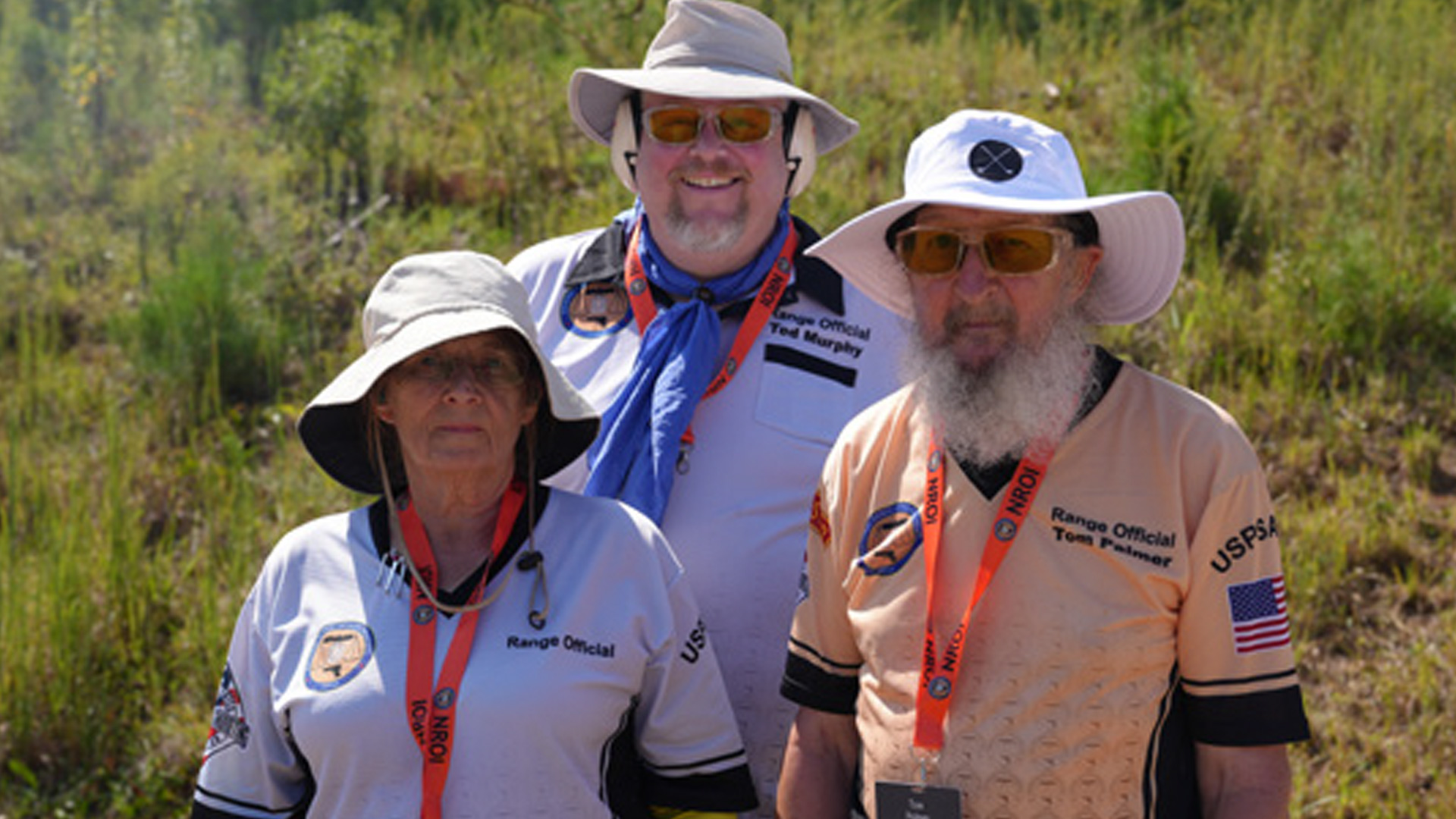
For 2023, the competitors got to see the right mix of these two divisions, combined with a solid set of stages to challenge their shooting in both divisions.
The build crew, with Walt Paegel driving, did an amazing job, thanks to Drew Coleman, Candice Juliano, Sveta Paegel, Steve Wright, Jan Wright, Jack Lancaster, Eric Evans, Jordan Binion, Troy McManus and John Serafin. The staff as always continues to show up and make the USPSA Nationals what they are. The only direction I give the staff is, “they make or break the experience of Nationals.” For the past six years and countless matches, the volunteer staff has continued to “make the experience” for the competitors better each time.
Here’s some good news—the 2024 USPSA Pistol-Caliber Carbine and Open Nationals will be back together at the CMP Talladega Marksmanship Park on October 16-20. Staff will shoot October 16-17, with regular competition October 18-20. Additional information will be released with regards to registration and slots soon.
Article from the November/December 2023 issue of USPSA’s magazine. All photos by Jake Martens.














